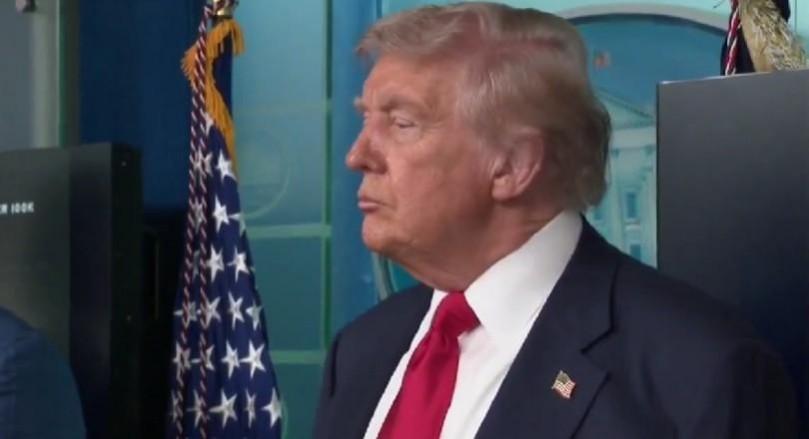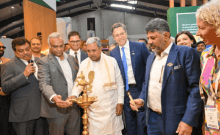
On August 15, 2025, the historic summit between U.S. President Donald Trump and Russian President Vladimir Putin in Anchorage, Alaska, concluded without a definitive resolution to the Russia-Ukraine conflict but with outcomes that reverberate across global geopolitics. Held at Joint Base Elmendorf-Richardson, this first U.S.-Russia summit since 2021 was a high-stakes diplomatic gamble, driven by Trump's campaign promise to end the Ukraine war swiftly and Putin's quest to reassert Russia's global influence. The absence of a concrete peace deal, coupled with discussions on trade, energy, and nuclear arms control, has left the world parsing the summit's implications. For India, the Indo-Pacific region, NATO, and the broader international community, the outcomes signal a complex recalibration of strategic priorities, economic alignments, and diplomatic balancing acts.
The Outcome: A Diplomatic Stalemate with Strategic Gains
The summit, billed as a "listening exercise" by the White House, failed to produce a ceasefire in Ukraine, as anticipated by many analysts. Trump's suggestion of a follow-up trilateral meeting with Ukrainian President Volodymyr Zelenskyy was met with Russian reticence, underscoring the deep chasm between Moscow's maximalist demands, territorial concessions, Ukrainian neutrality, and sanctions relief and Kyiv's unwavering commitment to sovereignty. Putin's proposal for Ukraine to cede Donbas as a precondition for peace was rejected outright by Zelenskyy, who insisted that territorial issues could only be addressed post-ceasefire. European leaders, wary of a "Yalta 2.0" scenario, echoed Kyiv's stance, emphasizing that no deal could be made without Ukraine's inclusion.
Despite the lack of a breakthrough on Ukraine, the summit yielded tentative agreements in other areas. Discussions on Arctic energy cooperation and a potential nuclear arms control pact emerged as areas of mutual interest. Trump's openness to "territorial swapping" and economic incentives, such as access to Arctic resources, hinted at a broader U.S.-Russia détente, albeit one fraught with risks for Western unity. The summit also saw Trump leverage economic pressure, particularly through secondary sanctions on nations like India for purchasing Russian oil, to push Putin toward negotiations. While no formal communiqué was issued, the Kremlin's willingness to engage in follow-up talks suggests a strategic victory for Putin, who regained international legitimacy by securing a U.S. summit without concessions.
Implications for India: Navigating a Strategic Dilemma
For India, the summit's outcomes are a double-edged sword, intertwining economic, diplomatic, and security considerations. The Trump administration's imposition of a 25% tariff on Indian imports, escalating to 50% in some sectors, was explicitly tied to New Delhi's continued purchase of Russian oil, which now constitutes over a third of India's crude imports. Trump claimed these tariffs pressured Russia into negotiations by threatening its second-largest oil customer, a narrative India disputes, arguing that its oil purchases stabilize global energy markets and were initially encouraged by the U.S.
The summit's failure to secure a Ukraine peace deal raises the specter of intensified U.S. sanctions, potentially increasing tariffs on Indian goods or targeting Russia's shadow fleet, which could disrupt India's energy supply chain. New Delhi faces a strategic dilemma: diversify energy sources, risking economic strain, or negotiate tariff relief by reducing Russian oil imports, which could strain its decades-long ties with Moscow. The Global Trade Research Initiative (GTRI) warns that India must pursue structural reforms and aggressive trade diplomacy to diversify exports to Europe, ASEAN, and other regions to mitigate tariff impacts.
Diplomatically, India's neutral stance in the Russia-Ukraine conflict, abstaining from UN resolutions condemning Russia while engaging with both Moscow and Kyiv has been tested. The summit's optics, with Putin on U.S. soil, bolster India's argument that Western criticism of its Russian ties is hypocritical, given ongoing U.S.-Russia engagement. Prime Minister Narendra Modi's recent call with Putin and his Independence Day pledge for self-reliance signal India's intent to maintain strategic autonomy. However, a potential U.S.-Russia détente could ease tariff tensions, allowing India to continue its balancing act without facing punitive measures.
India's defense ties with the U.S., exemplified by the upcoming Yudh Abhyas military exercise in Alaska, remain robust despite tariff disputes. Yet, New Delhi must tread carefully to preserve its role as a counterbalance to China in the Quad while managing its historical partnership with Russia, a key supplier of defense equipment. A successful U.S.-Russia deal could stabilize India's energy imports and trade relations, but a breakdown risks further economic coercion, forcing India to choose between Western alignment and its strategic autonomy.
Regional Implications: The Indo-Pacific and Arctic Ambitions

In the Indo-Pacific, the summit's outcomes ripple through India's strategic calculus. The U.S.'s tariff pressure on India, while sparing China, a larger buyer of Russian oil highlights contradictions in Washington's approach, potentially undermining the Quad's cohesion. India's role as a regional stabilizer could be weakened if economic pressures mount, diverting resources from defense modernization and maritime security initiatives critical to countering China's assertiveness.
The summit's focus on Arctic cooperation introduces a new dimension to regional dynamics. The Arctic, with its vast oil and gas reserves and emerging shipping routes like the Northern Sea Route, is a strategic frontier where Russia holds a dominant position. Trump's interest in Arctic energy collaboration could draw U.S. investment into the region, potentially aligning with India's energy diversification goals. However, India must navigate Russia's control over Arctic routes and China's growing Arctic ambitions, ensuring its energy security without compromising its Indo-Pacific strategy.
NATO's Conundrum: A Fractured Alliance?
For NATO, the summit underscores the alliance's precarious position. Trump's willingness to engage Putin bilaterally, sidelining Ukraine and European allies, has fueled fears of a fractured transatlantic alliance. European leaders, including those from the UK, France, and Germany, issued a unified statement rejecting any deal excluding Ukraine, emphasizing that borders cannot be changed by force. The summit's failure to secure a ceasefire reinforces Europe's reliance on U.S. security guarantees, even as Trump's rhetoric questions NATO's relevance.
Putin's presence in Alaska, a symbolic return to the global stage, weakens NATO's narrative of isolating Russia. His maximalist demands, Ukrainian neutrality and territorial concessions exploit divisions within the alliance, particularly as Trump floats ideas like territorial swaps that contradict NATO's principles. European NATO members have increased defense spending since Trump's second term began, anticipating reduced U.S. commitment. A U.S.-Russia deal prioritizing economic cooperation over Ukraine's sovereignty could embolden Russia's aggression toward NATO's eastern flank, particularly Poland and the Baltic states, raising the specter of escalation.
Global Implications: A Shifting World Order
Globally, the summit marks a pivotal moment in the reconfiguration of power dynamics. Putin's diplomatic coup in securing a U.S. meeting without concessions signals the limits of Western isolation strategies. His ability to leverage Russia's battlefield gains and nuclear arsenal ensures Moscow remains a formidable player, despite economic sanctions. The summit's focus on Arctic resources and nuclear arms control suggests a potential thaw in U.S.-Russia relations, which could reshape global energy markets and strategic stability.
For the Global South, India's experience with U.S. tariffs highlights the risks of economic coercion in a multipolar world. Nations like China, which face less pressure despite larger Russian oil purchases, may exploit Western divisions to expand influence. The summit's failure to address Ukraine's inclusion undermines the principle of sovereignty, potentially encouraging revisionist powers to pursue territorial ambitions.
Critical Perspective: Beyond the Narrative
The establishment narrative centered on Trump as a dealmaker and Putin as a pariah obscures deeper truths. Trump's tariff strategy, while framed as leverage against Russia, risks alienating allies like India, weakening the U.S.-led order. Putin's intransigence, rooted in Russia's economic resilience and military gains, exposes the West's overreliance on sanctions. The summit's Arctic focus, while economically promising, distracts from the moral and strategic imperative of supporting Ukraine's sovereignty. For India, the region, NATO, and the world, the summit underscores the fragility of alliances and the need for pragmatic, principled diplomacy in an increasingly fragmented global order.
The Trump-Putin summit, while inconclusive on Ukraine, sets the stage for a complex interplay of economic leverage, strategic posturing, and diplomatic maneuvering. India must navigate tariff pressures and energy security with finesse, while NATO faces existential questions about its unity. The world watches as the U.S. and Russia flirt with détente, aware that the stakes, geopolitical stability, economic resilience, and the principles of sovereignty could redefine the 21st-century order.
[Major General Dr. Dilawar Singh, IAV, is a distinguished strategist having held senior positions in technology, defence, and corporate governance. He serves on global boards and advises on leadership, emerging technologies, and strategic affairs, with a focus on aligning India's interests in the evolving global technological order.]








